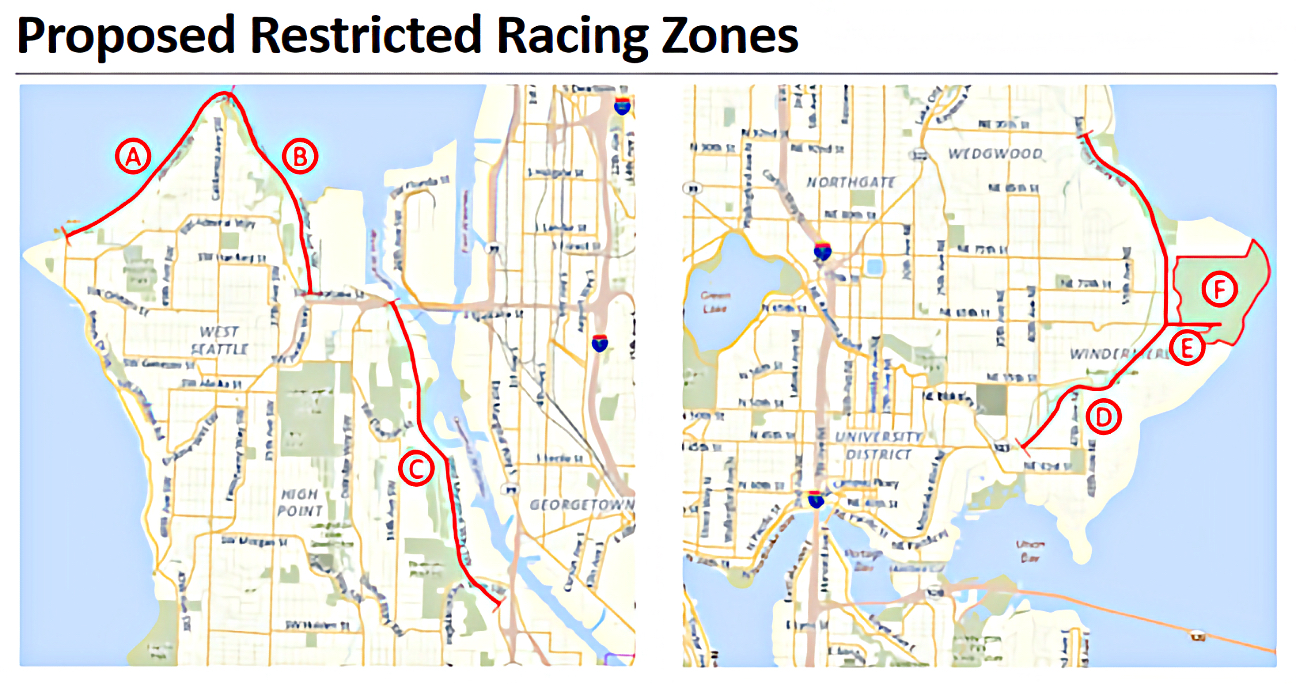Information from District 1 City Councilmember Lisa Herbold
On Tuesday the Transportation and Seattle Public Utilites heard a first briefing on Council Bill 120600, which designates racing zones eligible for automated safety cameras.
In 2022, the state legislature authorized use of cameras for walk areas, public park speed zones and hospital speed zones. Use in racing zones was also authorized if designated by local ordinance. That’s what this bill would do.
The Central Staff presentation shows the locations proposed in the legislation; For District 1, A is Alki Avenue, B is Harbor Avenue, and C is West Marginal Way.

During public comment, several speakers spoke to safety concerns on Alki and Harbor Avenue, including pedestrian safety, and said racing activities tend to start in the evenings and continue until well after midnight; some noted that speed bumps have helped in some areas.
I relayed comments I received from the Highland Park neighborhood, about West Marginal Way:
“We can attest to its popularity with racers, who can be heard at all hours of the night racing vehicles along this area (for example just last night at 2am they could be heard).
We support adding this deterrent to this risky behavior with the caveat that an equity analysis of the results be submitted as noted in the legislation. Having police attempt to chase down drivers in fast cars sounds so much more dangerous than issuing speeding tickets from a traffic camera”
Another Delridge constituent wrote, “illegal street racing on Marginal Way is a continuous disturbance during the warmer months. It’s also highly dangerous to anyone legally using these streets.”
The legislation could come up in committee again as soon as July 18. As noted above, the legislation makes racing zones eligible for camera enforcement; but SDOT cannot implement that authority until an an equity analysis is completed, aligned with the expectation of Council funding for an expansion of school zone speed enforcement, that includes a detailed implementation plan including (1) camera deployment by location; (2) documentation of the race and social justice analysis used to inform new deployments; (3) An evaluation of the costs and benefits for expanding other automated traffic safety camera program authority provided under state law.